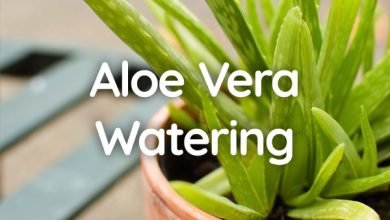The Coleus: [Characteristics, Planting, Care, Irrigation and Substrate]
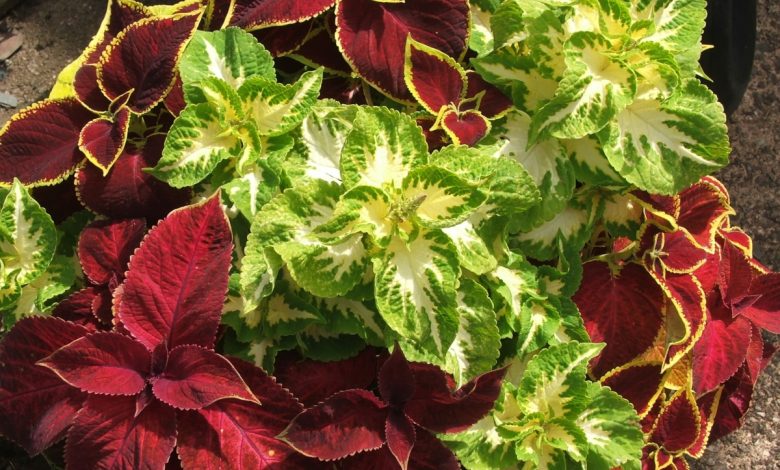
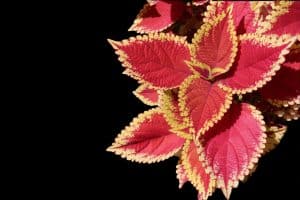 Coleus, cretonne or Solenostemon, is a beautiful semi-bushy plant, native to Southeast Asia.
Coleus, cretonne or Solenostemon, is a beautiful semi-bushy plant, native to Southeast Asia.
Very showy and striking due to its spectacular leaves arranged in pairs of intense contrasting colours, it can reach a meter in height outdoors, although in a pot it does not exceed 50 centimeters.
Characteristics of the Coleus
- Botanical name: Solenostemon scutellarioides.
- Common name: Coleus.
- Foliage: Coleus are from the Lamiaceae, or mint, family and have the familiar square stems and opposite leaves. However, the foliage offers a great variety, with wrinkled leaves, others elongated, and a vast combination of colors.
- The Flowers: The tall, slender stems of the flowers are often pruned back before they bloom, to maintain the plant’s energy leading to a bushy plant.
- Size when grown: Miniature coleus varieties grow only a few inches tall, and others can grow much larger.
- Sun exposure: Light exposure depends on the variety. The old seed-grown coleus do best in partial shade, but the new vegetatively grown varieties have their best color when grown in full sun.
- Soil pH: 6.0-7.0
- Zones: These tropical plants are hardy and fast growing. They are also used as houseplants.
- Flowering Period: Plants will attempt to flower intermittently throughout the growing season, but as mentioned, flower stalks are often clipped back.
It is important to mention that it works much better in closed spaces, because the direct sun burns its leaves.
Whatever its cultivation, the color combination of its serrated leaves, whose sculpted edges with very vivid tones, contrast with yellows and purples, is incredible; browns, greens, and scarlets; or the fabulous bluish- purple mixes.
If the conditions that we will describe below are met, do not hesitate for a moment to cultivate and give a lot of love to this spectacular plant.
Temperature: Where to plant the coleus?
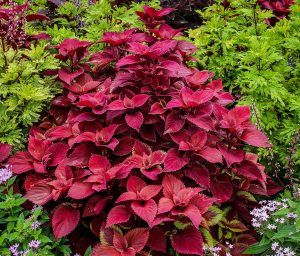 A Coleus greatly enjoys stable ambient temperatures around 20°C, but below 10°C it will begin to suffer, even though there are varieties that tolerate 0°C outdoors in winter.
A Coleus greatly enjoys stable ambient temperatures around 20°C, but below 10°C it will begin to suffer, even though there are varieties that tolerate 0°C outdoors in winter.
Do not subject it to sudden drafts either because it will suffer a lot. The air conditioning in your home is also not good for him.
Light: What needs do you have?
Sunlight should be diffuse, never direct, as has already been said. This aspect, together with prudent watering, is vital so that the plant does not get sick.
Substrate and Fertilizer: How do we prepare the land?
Loose substrates that drain quickly, together with a slightly acidic pH, suit this plant wonderfully.
Mixing a base of universal substrate with heather or peat soil and a bit of good quality sand is fantastic for its full development, because the drainage will work perfectly and it will never drown in water.
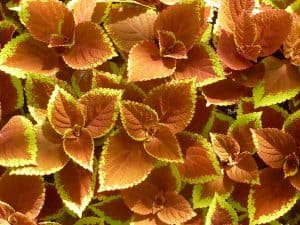 The pot, additionally, must have enough holes to guarantee rapid permeability. Otherwise, root problems will arise that can be avoided with these simple measures that prevent root rot.
The pot, additionally, must have enough holes to guarantee rapid permeability. Otherwise, root problems will arise that can be avoided with these simple measures that prevent root rot.
Whenever possible, you should keep this plant beauty near a window or in a room with excellent natural lighting.
And the fertilizer?
It is also very important to add a good liquid fertilizer to the irrigation water, every 2 to 3 weeks.
Apply it without exceeding the dose indicated in the instructions.
Another important stimulus is a pruning at the tips that makes it gain volume and save energy at the same time, with the elimination of excess stems that come out more and more each time. These can serve as cuttings that tend to take root very easily, to multiply the Coleus.
And remove in autumn or winter some flower spikes that reduce vigor and do not look good.
Irrigation: How to water the coleus and how often?
 It does not require a lot of water for its maintenance. Once a week is enough.
It does not require a lot of water for its maintenance. Once a week is enough.
In winter, heating can be your worst enemy. As in this season of the year it will suffer from the lack of humidity, it is preferable to place a saucer with water under the testo that it will absorb according to its taste, rather than constantly watering it. Quite the contrary.
By these dates the risks should be spaced out or circumscribed to every 10 days.
And in summer you have to hydrate it very carefully, because the substrate cannot dry out but neither can it get waterlogged. Always prevent its roots from rotting, constantly checking the level of permeability of the substrate.
You are allowed to spray its leaves with water if the summer is very hot.
Contrary to many other plants, Coleus should not be sprayed with water on its leaves. You would irreparably damage them.
Remember that the maintenance problems of this plant are due especially to errors in its care and to underestimating the fact that they are sensitive to different factors that, if controlled, will not have negative consequences.
As long as sudden currents, excessive water in irrigation, very high or very low temperatures are avoided, and adequate lighting is provided, the Coleus will maintain its spectacular showiness.
Coleus care
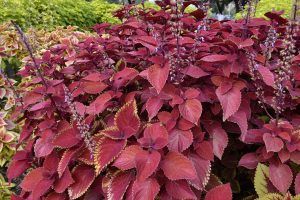 Although coleus plants love the heat, they also need moist soil.
Although coleus plants love the heat, they also need moist soil.
The soil should not stay wet all the time, but long dry spells will slow plant growth, and the leaves will begin to turn brown around the edges.
Mulch will help the soil retain moisture longer, but cedar mulch can be toxic to coleus, so don’t put it around these plants. Also, don’t let it touch the stems, as it can promote rot and hide slugs.
If you have rich soil, you may not need to feed the coleus at all. You’ll get the best color from your coleus leaves if you’re careful with your fertilizer.
Did you know…?For bushy plants, pinch off the growing tips when the plant is about 6 inches tall.
You can do this a few more times if you like, but after the coleus start to flower, you’ll pinch the stems and get the same results as pinching the tips.
Aside from keeping the plants trimmed, the only maintenance that is required is making sure they get enough water. Container beetles may need to be watered twice a day.
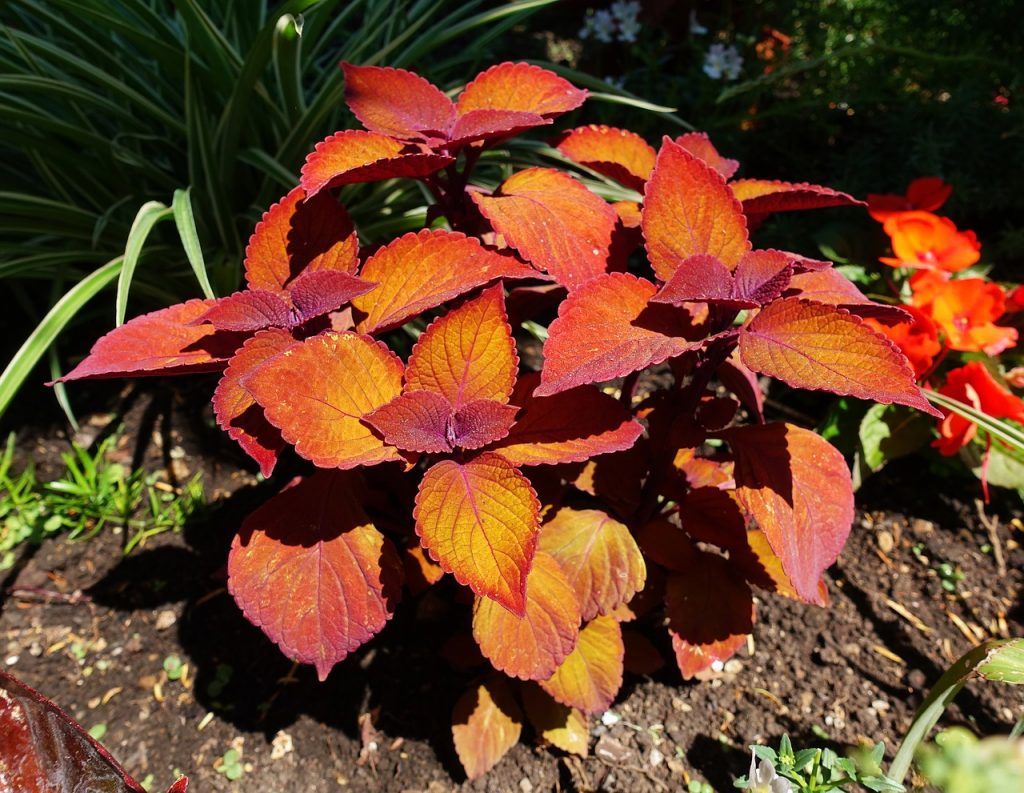
Coleus pests and diseases
The biggest pests outside are some animals, such as marmots or rabbits. If you can protect your plants early in the season, there will be other plants and foods that these animals will prefer to eat during the summer, and they will leave your coleus alone.
Coleus are not usually bothered by disease unless the weather turns cool and humid. If this occurs, watch for signs of fungal diseases like mold.
If you grow them as houseplants, watch out for scale, whiteflies , and especially mealybugs. If these invaders appear in your coleus, the best way to avoid them is to be vigilant. Once we have them installed, solutions such as neem oil or potassium soap can help you a lot.

![Photo of How to Transplant an Indoor Plant: [Complete Guide]](https://www.complete-gardening.com/wp-content/uploads/2022/08/how-to-transplant-an-indoor-plant-complete-guide-390x220.jpg)

